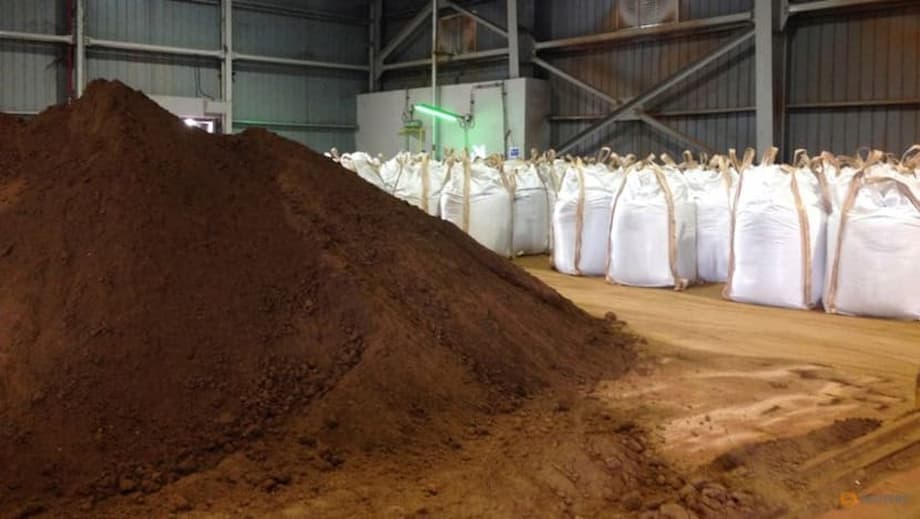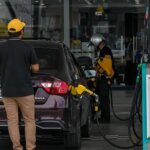Malaysia’s Rare Earth Opportunity: A New Industrial Frontier
Malaysia stands at a pivotal moment in the global race for rare earth elements (REEs), minerals essential to the technologies powering the 21st century. From smartphones and electric vehicles to wind turbines and advanced defense systems, rare earths are the backbone of modern innovation. As the world seeks to diversify supply chains away from China’s near-monopoly, Malaysia’s vast deposits and processing capacity have thrust it into the spotlight. But with opportunity comes complexity—technological, environmental, and geopolitical.
- Malaysia’s Rare Earth Opportunity: A New Industrial Frontier
- Why Rare Earths Matter: The Global Stakes
- Malaysia’s ‘Mine to Magnet’ Vision: Policy and Progress
- Challenges: Technology, Regulation, and Sustainability
- Geopolitics: Navigating Between Giants
- Economic Impact and the Path Forward
- Comparative Insights: Malaysia in the Global Rare Earth Landscape
- In Summary
The country is home to the Lynas Advanced Materials Plant in Gebeng, Pahang, the largest heavy rare earth processing facility outside China. Owned by Australia’s Lynas Rare Earths, the plant processes around 1,500 tonnes of heavy rare earths annually, separating minerals like dysprosium and terbium—critical for high-performance magnets used in electric vehicles and renewable energy systems. Since its launch in 2012, Lynas has invested over US$700 million in Malaysia and contributed more than US$1 billion to the local economy.
Malaysia’s ambitions extend far beyond processing imported ores. With rare earth deposits estimated at over US$200 billion and a government eager to move up the value chain, the country is positioning itself as a key player in the global rare earth supply chain. But can Malaysia overcome its technological and regulatory hurdles to realize this vision?
Why Rare Earths Matter: The Global Stakes
Rare earth elements comprise 17 metallic elements, including the 15 lanthanides, scandium, and yttrium. Despite their name, most are relatively abundant in the Earth’s crust, but economically viable concentrations are rare, and their extraction and separation are technically challenging.
These elements are indispensable for:
- Permanent magnets in electric motors and wind turbines
- Smartphones, computers, and advanced electronics
- Medical imaging devices and lasers
- Defense applications, including radar and missile guidance
China currently dominates the sector, producing about 60 percent of global rare earth raw materials, processing 85 percent of output, and manufacturing nearly 90 percent of the world’s rare earth magnets. This dominance is not accidental—it is the result of decades of strategic investment, state subsidies, and a willingness to absorb environmental costs that have deterred competitors.
China’s control over rare earths has given it significant leverage in global politics. In 2010, Beijing halted rare earth exports to Japan during a territorial dispute, and in 2023, it imposed new restrictions on the export of rare earth processing technology. These moves have sent shockwaves through industries and governments worldwide, prompting urgent efforts to diversify supply chains.
Malaysia’s ‘Mine to Magnet’ Vision: Policy and Progress
Malaysia’s government has responded with a bold strategy. Prime Minister Anwar Ibrahim has outlined a five-year plan to accelerate rare earth development, focusing on building domestic capacity in mining technology, refining, and separation. The goal is clear: transform Malaysia from a supplier of raw materials into a hub for high-value downstream industries, such as magnet manufacturing and advanced materials.
Key elements of Malaysia’s rare earth strategy include:
- Export Ban on Raw Rare Earths: In 2024, Malaysia imposed a moratorium on the export of unprocessed rare earth elements. The aim is to force value addition within the country, attracting international firms to invest in local processing and manufacturing. Only processed rare earths and value-added products can be exported, with exceptions for pilot projects under strict guidelines.
- Integrated Ecosystem Development: The government is pushing for an integrated rare earth ecosystem, from upstream mining and midstream processing to downstream manufacturing of magnets and components. Projections suggest that super magnet production alone could generate up to US$3 billion in revenue by 2030.
- International Partnerships: Malaysia is actively courting investment from global partners, including Australia, Japan, South Korea, and China. Recent agreements include a memorandum of understanding between Lynas and Kelantan’s state investment arm for local supply, and a partnership with South Korea’s JS Link to produce up to 3,000 tonnes of super magnets per year in Kuantan.
- Neutrality in Geopolitics: Malaysia is carefully balancing its relationships with both the United States and China. Officials stress that the country will not favor one side over the other, maintaining consistent export policies and inviting all companies to participate in downstream activities.
Investment, Trade and Industry Minister Tengku Zafrul Abdul Aziz explained in an interview,
“Malaysia is positioning itself as a processing hub rather than a raw material supplier. We are inviting all companies to invest in downstream activities of rare earths in the country, allowing the export of value-added products. This approach is intended to maximize economic benefits and strengthen the case for keeping processing domestic.”
Malaysia currently supplies about 13 percent of global critical mineral demand, a figure expected to rise as new projects come online.
Challenges: Technology, Regulation, and Sustainability
Despite its ambitions, Malaysia faces significant hurdles in realizing its rare earth potential.
Technological Gaps
Malaysia lacks advanced technology for rare earth separation and refining, especially for heavy rare earths. While Lynas has brought expertise and investment, much of the high-value processing technology remains concentrated in China, which has banned the export of such technology since December 2023. This makes technology transfer and capacity building a top priority for Malaysia’s policymakers.
To address this, Malaysia is seeking partnerships with countries that can provide both investment and technical know-how. Japan’s JOGMEC (Japan Organization for Metals and Energy Security) offers a model: after China’s 2010 export ban, Japan invested heavily in overseas mines and processing facilities, including Lynas in Malaysia, to secure alternative supplies. Malaysia hopes to replicate this approach by attracting similar long-term, strategic investment.
Regulatory and Governance Issues
Mining in Malaysia is governed by a complex interplay between federal and state authorities. Under the Federal Constitution, land and mining rights are controlled by state governments, which can issue permits and even degazette forest reserves for mining without federal approval. This fragmentation complicates the implementation of national policies and creates loopholes for illegal mining.
The Ministry of Natural Resources and Environmental Sustainability has ruled out creating a centralized regulator for the rare earth industry, citing constitutional provisions and state objections. Acting Minister Johari Abdul Ghani emphasized the need for close consultation with state governments to safeguard their rights, making regulatory harmonization a slow and delicate process.
Analysts warn that without stronger governance, transparency, and accountability, Malaysia risks repeating past mistakes. Previous rare earth ventures, such as MAREC and ARE, were shuttered due to public protests over radioactive waste and environmental concerns.
Environmental and Social Concerns
Rare earth mining and processing are associated with significant environmental risks, including radioactive waste, deforestation, and water pollution. The Lynas plant has faced ongoing public scrutiny over waste management, despite compliance with safety standards. New extraction methods, such as in-situ leaching, are being explored to minimize land clearing, but they carry their own risks of water contamination.
Most of Malaysia’s rare earth deposits are located in Terengganu, Kelantan, and Pahang—regions with high biodiversity and carbon stock. Up to 80 percent of deposits are estimated to be in forest reserves. The government has proposed strict guidelines and standard operating procedures, but implementation remains inconsistent across states.
Former Environment Minister Nik Nazmi Nik Ahmad cautioned,
“Proper policies and environmental safeguards are needed. We must avoid short-term gains that come at the expense of long-term sustainability.”
Malaysia’s National Mineral Industry Transformation Plan 2021-2030 aims to embed sustainability and ESG (environmental, social, and governance) standards across the value chain, but progress is uneven.
Geopolitics: Navigating Between Giants
Malaysia’s rare earth ambitions are unfolding against a backdrop of intensifying geopolitical rivalry between the United States and China. Both countries are racing to secure critical minerals for their industries and defense sectors, and both see Malaysia as a strategic partner.
China has long used its dominance in rare earths as a tool of statecraft, offering technology transfers and investment to friendly nations while imposing export restrictions on rivals. In April 2025, Beijing proposed sharing rare earth separation technology with Malaysia, a move welcomed by Kuala Lumpur as an opportunity to advance its industrial capacity. At the same time, China has restricted exports of certain rare earths and associated magnets, disrupting supply chains in Japan, Europe, and the United States.
The United States, for its part, is investing in domestic rare earth production and processing, but progress is slow. American companies like MP Materials and Noveon Magnetics are building new facilities, and the government has launched the Minerals Security Partnership with allies such as Australia, Japan, and India. However, these efforts are hampered by high costs, environmental regulations, and a lack of technical expertise.
Malaysia’s strategy is to remain neutral and open to all partners. Minister Tengku Zafrul explained,
“Malaysia cannot have two different standards when dealing with the US and China. If we allow export to China, we must also allow export to other parts of the world. Consistency and neutrality are important.”
This balancing act is crucial for Malaysia’s credibility and for attracting investment from both sides. The country’s rare earth policy is designed to anchor higher-value activity at home while staying open to global buyers under equal rules.
Economic Impact and the Path Forward
The potential economic benefits of a thriving rare earth industry are substantial. The New Industrial Master Plan 2030 values Malaysia’s rare earth resources at RM747.2 billion (about US$175 billion), with the potential to attract RM100 billion (US$23 billion) in investments and create 4,000 jobs. By moving up the value chain—from mining to magnet manufacturing—Malaysia aims to capture a greater share of the profits and technological know-how.
Malaysia’s approach is informed by lessons from Japan’s JOGMEC, which successfully reduced Japan’s dependence on Chinese rare earths from 90 percent to 58 percent within a decade through targeted overseas investments and technology partnerships. Malaysia is inviting similar strategic investment, with incentives for companies that commit to local processing, job creation, and technology transfer.
However, the path forward is not without risks. The rare earth market is notoriously volatile, with prices subject to geopolitical shocks and Chinese state intervention. China’s willingness to absorb losses and subsidize its industry makes it difficult for new entrants to compete on price. Environmental and social challenges remain significant, and public opposition could derail projects if not managed transparently and sustainably.
Comparative Insights: Malaysia in the Global Rare Earth Landscape
Malaysia is not alone in seeking to build a resilient rare earth supply chain. The United States, Australia, Canada, and Saudi Arabia are all investing in new mining and processing hubs. According to a recent analysis by the Center for Strategic and International Studies, no single country can outpace China alone; international collaboration is essential.
Malaysia’s strengths include:
- Existing midstream processing capacity (Lynas plant)
- Significant untapped rare earth deposits
- Strategic location and infrastructure
- Government commitment to value-added industry development
Its challenges include:
- Technological dependence on foreign partners
- Fragmented regulatory environment
- Environmental and social risks
- Exposure to global market volatility
To succeed, Malaysia must embed sustainability and ESG standards, secure technology-sharing deals with trusted partners, and harmonize regulations across federal and state levels. The country’s ability to navigate the competing interests of China, the US, and other stakeholders will determine whether it can realize its ‘mine to magnet’ vision.
In Summary
- Malaysia is emerging as a key player in the global rare earth supply chain, with vast deposits and the largest heavy rare earth processing plant outside China.
- The government has banned raw rare earth exports to force value addition and attract downstream investment, aiming to build an integrated ‘mine to magnet’ ecosystem.
- Technological gaps, regulatory fragmentation, and environmental concerns pose significant challenges to sustainable development.
- Malaysia is balancing relationships with both the US and China, maintaining neutrality and inviting investment from all sides.
- Success depends on embedding sustainability, securing technology transfer, and harmonizing state and federal policies.
- Malaysia’s rare earth ambitions offer significant economic potential but require careful management of environmental, social, and geopolitical risks.




